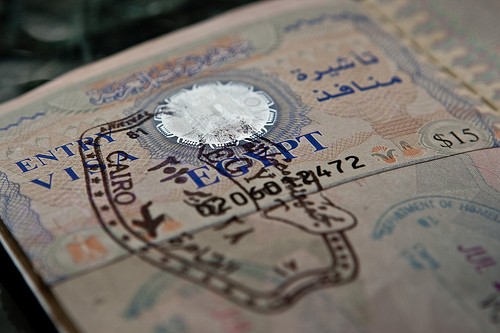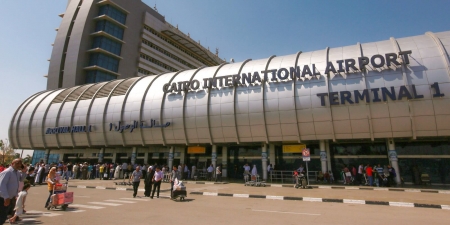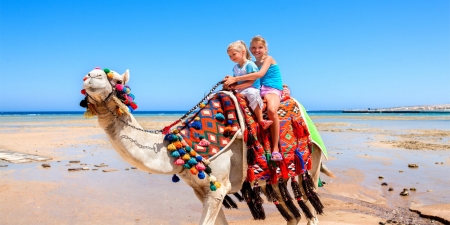|
The desert is a benign environment – until you make a mistake- then it can be lethal. In summer you can expect to last less than three days without water. In winter, much longer, probably a week. It is the very lack of water that makes the desert a dangerous place to make a mistake. Also its remoteness. I would not include dangers from snakes and scorpions because they are rarer here than in more built up areas of the Mediterranean. I have seen more scorpions in the South of France than in the Sahara!
|
|
|
Do take care of the environment and make sure you leave the campsite as you find it. Do feel free to tell drivers and tour guides to take away rubbish rather than burn it. Do take two or more vehicles. When making a long trip into the desertwhich means any trip where you will be more than 25km from a road it is advised that you take two vehicles. Do ask to see the camels first on a camel journey. Do they look reasonably healthy? Do they have humps or are they skinny and emaciated? For a long trip you want a healthy camel. Next ask to mount a camel (if it is your intention to ever ride- many camel travelers never ride- they simply walk alongside their beasts) and see if the guide holds down the neck until you have mounted properly. Most accidents with camels when mounting or dismountingwhen the camel suddenly bucks and throws its load- you- off. If a guide is attentive at these moments he knows. Do plan on drinking between 1 and 3 litres of water a day in winter in addition to any tea, coffee or soup. Do drink in long bursts when you are cool- early morning and early evening and lunch being best. |
Don’t take away anything that damagesor reduces the landscape in anyway. Don’t bother with forcing three vehicles on a trip when you only have two. For a trip to the Gilf Kebir the old advice was to take three vehicles, but this was in the days of less reliable cars. Two will suffice as long as they are not overloaded. Do check out the guide. When hiring a guide with vehicles see how he loads the car- does he store fuel next to food? Is the vehicle itself dirty and in need of attention? Are the tyres worn and inappropriate? Thankfully poor guides are rare. The desert is recognized by all as a serious place to have a breakdown and almost all guides go well prepared. Don’t wear trainers for walking – the sand will get inside the lining and make the show too tight. They also let too much sand in going down dunes. Sandals and boots are better. |
|
The country has been welcoming guests for thousands of years, and making visitors feel welcome comes naturally.
You will find that Egyptian love of family life means that children are treated like VIPs. Egypt is a very safe country and you will see many people in uniform (like tourist police and security staff) who are there to help and give you peace of mind. |
|
|
Do stock up on sun cream and moisturiser, Wear sunglasses and a hat.– it’s particularly important to be protected between 11 am and 2 pm when the sun is hottest. Do keep your passport with you whenever you are away from accommodation place. Do take care of Underwater treasures, it is human heritage and worthy to preserve. Do have a good idea of where you are going and keep a map or guide book at hand. Do respect local customs – there are dress rules when visiting mosques and Churches, so be aware. Do visit the local Tourist Information Office to get the most from your visit. Do check opening times for places to visit – they can vary during Ramadan & national holidays. |
Don’t forget to take your camera. Don’t go for desert excursions without experienced guide & good driver. Don’t take anything from the National Parks, and don’t leave anything behind you. Don’t miss courses for golf & diving for you & your children. Enjoy your time in Egypt and let the calm, the kindness and respect for people be part of your life too – and you are welcome to take that home with you! |
Egypt Travel Guide
Egypt Oases
- Gara Cave
- Al-Deer
- Badr's Museum
- Bagawat
- Black desert
- Cleopatra bath
- Great Sand Sea
- Mizawaka
- Monastery of Anba Bishoy
- Mountain of the Dead in Siwa | Gebel al-Mawta
- Qarun Lake
- Roman Temple in Deir El-hagar
- Temple of Alexander the Great
- Temple of Amon
- Temple of Dush
- Temple of Hibis
- Temple of Nadura
- The Crystal Mountain | Bahariya Crystal Mountain
- The Monastery of Abu Makar (Makarios) | Egypt
- The Monastery of Baramus | Egypt
- The Monastery of El Suryan | Cairo Attractions
- Therapy in Siwa Oasis
- Valley of Al-Haiz
- Valley of the Golden Mummies
- Wadi Al- Rayan, Protected Area | Fayoum, Egypt
- Wadi El-Natroun | The Monasteries of Wadi El Natrun
- The White Desert in Egypt
- Fayoum Bird-watching Guide
Ports of Call
Red Sea and Sinai
Famous Mosques in Egypt
Transportation guide in Egypt
Egypt Tourist Attractions
Egypt Pyramids
- Djedefre Pyramid | Abu Rawash
- Abu Sir | Egyptian Necropolis & Pyramids
- King Snefru's Pyramid | Egypt
- Old Kingdom Pyramids | Ancient Egypt
- Pyramid Complex of Pepi I
- Pyramid of Amenemhat III
- Pyramid of lahun | Egypt Pyramids
- Pyramid of Meidum
- Pyramid of Neferhetepes | Egypt Pyramids
- Pyramid of Netjerkhet | Egypt Pyramids
- Pyramid of Neferefre
- Pyramid of Sahure | Egypt Pyramids
- Pyramid of Sekhemkhet
- Pyramid of Sesostris III
- Pyramid of Teti | Egypt Pyramids
- Pyramid of Userkaf | Egypt Pyramids
History of Egypt
- The False Doors | Ancient Egypt Secrets
- Egyptian Canopic Jars: What are Canopic Jars?
- Holy Family in Egypt
- king khufu (Cheops) | Kings of Ancient Egypt
- Khafre Statue | King Khafre Pyramid
- Who built the first pyramid in Egypt
- Menkaure (Mykerinos) Pyramid | King Menkaure
- Ramesses IV | Ramses iv Tomb
- Ramses IX Tomb
- The Divine Triad of Dendera
Aswan Attractions
Luxor Attractions
Alexandria Attractions
Cairo Attractions
- Famous Bab al Futuh
- Al-Tannoura Egyptian Heritage Dance Troupe
- Saints Sergius and Bacchus Church
- Abusir Pyramids & The City of The Dead Egypt
- Agricultural Museum Egypt, Cairo
- AL Fustat Historical City
- Bab El Nasr Cairo City Gate
- Beit Al Sennari or Al Sennari House in Cairo
- The Cairo Tower
- Birqash Camel Market in Cairo
- Coptic Cathedral in Abbasiya
- Egyptian Museum Guide
- El Mosky Cairo | Bazaars & Souks
- King Tutankhamun Treasures: Inside the World of Egypt’s Most Famous Pharaoh
- The Mosque of Muhammad Ali Pasha in Cairo
- Royal Mummy Room in The Egyptian Museum
- The Pharaonic Village
- The Great Sphinx of Giza
- Babylon Fortress Facts
- Solar Boat Museum
- Valley Temple of Khafre
- St Mary Egypt Orthodox Church
- Verdi Aida Opera Show in Giza Pyramids Egypt
Plan Your Trip!
You Might Also Like

Felucca is a traditional wooden sailing boat sail along the Nile in Egypt, the craft is reliant on wind-power with no motor. Click to know more!

Egypt Entry Visa is a a governmental stamp that is using in the Egyptian airports for forginers who come to Egypt Either for Tourism or any other purposes. Click to know the different kinds of Visas to Egypt through Memphis Tours!

Arrival procedures at Cairo International Airport: Before you proceed to the passport control you must buy your Egyptian visa at the counter of the Bank.

Cairo Airport consists of 3 terminals and offers many facilities as you can see a bank, ATMs and is considered the main Egypt International Airport. Know more!

Information about the best Egypt Main Attractions starting with Cairo, Alexandria, Red Sea, Aswan, Luxor. Know more about Egypt Sightseeing now!

Christmas festivals often combines the commemoration of Jesus' birth with various customs, many of which have been influenced by earlier winter festivals.

The celebration of the New Year is the oldest of all holidays. It was first observed in ancient Babylon about 4000 years ago.

Know before you Go Red Sea Egypt, Red Sea tourism, Red Sea travel, Red Sea tours. Do's and Don'ts, Before you go Egypt desert, info about western desert, Egypt tourism.

